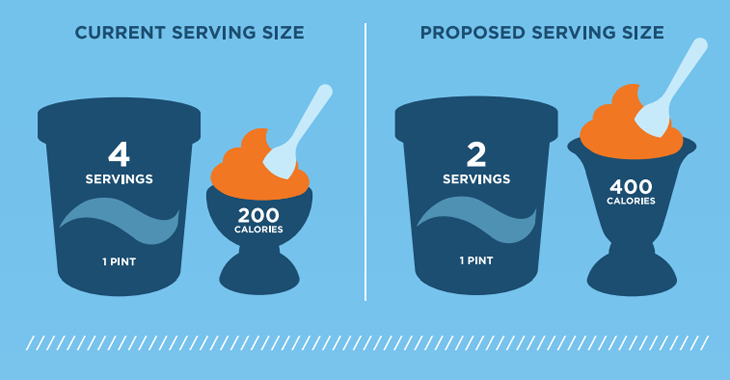
Best Reader Tips of 2021
This year reader tips led to dozens of ad alerts, as well as a complaint to regulators.
Agency seeks to account for portions Americans really eat.
The FDA on Thursday proposed major changes to the nutrition labels on food packages for the first time since the government initially required labeling in the early 1990s. The changes would put calorie counts in a larger type and adjust serving sizes to reflect better how much Americans eat in one sitting.
“The proposed new label is intended to bring attention to calories and serving sizes,” said Michael Landa, director of FDA’s Center for Food Safety and Applied Nutrition.
Present serving-size labeling can underestimate true serving sizes and mislead consumers into thinking they’re consuming fewer calories than they really are. Although labeling laws already require serving sizes to reflect how much people actually eat, the standards labelers use to determine serving sizes are based on surveys conducted in the late ’70s and ’80s. Under the current standards, ice cream manufactures can pretend consumers eat a pint of ice cream in four sittings instead of two — because that’s what a 1980s survey found — and cut the calories in half on the label. The FDA’s proposed changes would reflect the change in food consumption over the last 25 years, increasing the serving size on some foods (ice cream, soda) and decreasing it on others (yogurt).
“The proposed label would help people to understand the number of calories and amounts of nutrients they’re actually eating,” said Mary Poos, Ph.D., deputy director of FDA’s Office of Nutrition, Labeling and Dietary Supplements.
The labelings changes will also require certain foods sold in a single package to be re-labeled as a one serving. So marketers can no longer pretend you’re eating that 4.5-ounce bag of potato chips in multiple sittings (and thus cut down on the advertised calorie count). And 20-ounce bottles of soda will be labeled as one serving, not 2.5 servings as they sometimes are now.
The proposed labels also put the calorie count in a much larger type, puts the number of servings into a larger type, updates the daily values–which are used to inform consumers of the percent of daily recommended nutrients they are getting from the food–and changes the required listed nutrients. The labels will also require food-makers to list added sugars.
For more on food labeling, see our earlier article here.
This year reader tips led to dozens of ad alerts, as well as a complaint to regulators.
It’s the perfect formula for a class-action lawsuit trend.
These marketing claims are feeling the heat.


